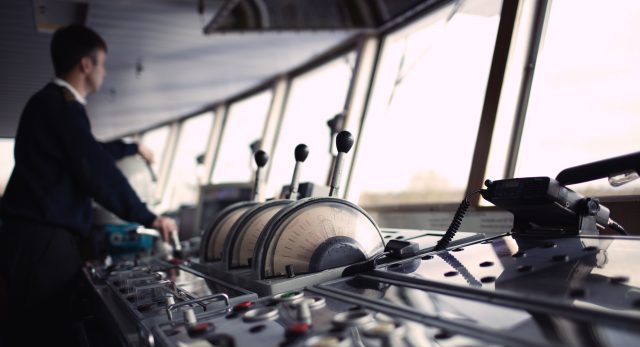Coastal waters navigation is extremely important for a vessel’s safe passage. Sometimes, Officers Of the Watch (OOW) – the responsible persons onboard for maintaining vessel’s safe navigation – work under restricted visibility. Τhey may navigate in limited sea areas as well. Such conditions make their job difficult and demanding to fix vessel’s position and avoid collisions.
Lessons to be learned: Cargo vessel collides with crane barge
In 2014, a tug was towing a crane barge at 5-6 knots in the south west lane of the Dover Strait. The tow was attached to the tug’s tow winch and positioned 250m behind the tug. The barge was fitted with navigation lights visible from 3nm. The tug had a towing light, stern light and flood light visible from astern and without AIS fitted, as she was under 300GT. A cargo vessel was overtaking the tug, but the OOW failed to spot the tug and her tow on radar and altered course to port pass across the stern. The vessel collided with the crane barge and then caught the tow wire around the bow, dragging the tug backwards and pulling the remaining tow wire of the winch. The tug’s tow winch hydraulics ruptured, and the winch brake band was burnt out in the process.
The importance of a capable OOW during coastal waters navigation
In order to achieve his role, the OOW has to deal with many tasks at the same time and this is why skill and time management are necessary for this job. Some of his tasks are
- keeping of a proper look-out
- managing the Bridge team
- constantly plotting the vessel’s route on the large-scale chart
- monitoring vessel’s position
- maneuvering according to the passage plan and the navigational equipment
If there are too many things to handle during coastal waters navigation, the OOW may look for assistance by informing the Master.
What to consider during the preparation for coastal waters navigation
The passage plan should be prepared taking into account:
- the vessel’s draught in relation with the available water depths
- the proximity to shallow water
- the probable effects of tides in the area
- the weather and the traffic density in the area
The scale charts should be available, with the route plotted. ECDIS system and Radars should be checked. The Bridge team should be manned and ready to maintain a proper and sharp look-out. Vessel’s engines and manual steering should be ready for immediate use. All vessel’s reporting and routing requirements should be understood and followed.
SQE Marine has prepared the checklist below aiming to provide the necessary steps required, to achieve vessel’s safe coastal waters navigation.














































































